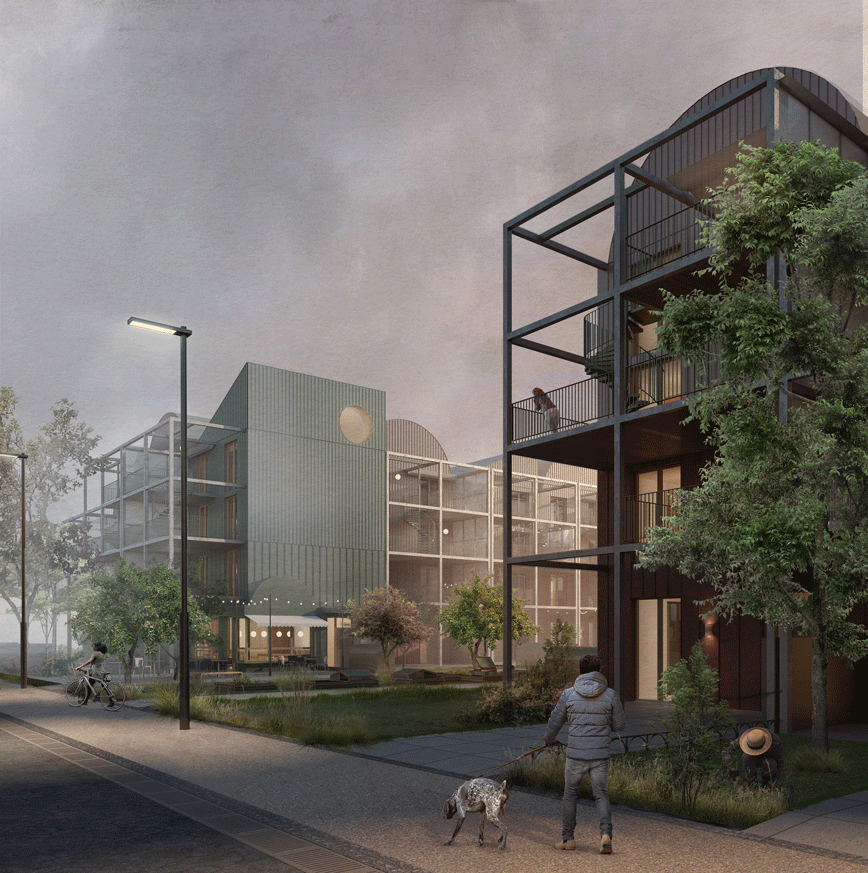
Front to Front
A proposal for Liverpool, revisiting back-to-back housing’s potential for adaptable urban density set in a communal landscape.
Liverpool Townhouse
Liverpool City Region’s Liverpool Townhouse competition was part of the inaugural Liverpool Festival of Architecture and challenged entrants to design a sustainable, buildable high-density family home, which made efficient use of precious urban land and with facilities that address the impact of the Covid pandemic.
Front to Front
Front to Front is primarily a typological proposition which explores the 21st Century potential of back-to-back terraced housing. From the industrial revolution until the early 20th Century, arranged around shared courts and in tightly spaced streets, the back-to-back provided new homes for new workforces in the rapidly urbanising towns and cities of the North of England. Highly efficient in terms of land and materials, large numbers of homes were built, at speed, to meet challenges not unlike some that we face today. However, while traditional back-to-back housing was cramped, and lacking ventilation, outside space and biodiversity, the Front to Front house type draws on modern technologies combined with a wide frontage and varied landscape to provide healthy, flexible, ‘loose-fit’, sociable and sustainable homes for a changing world.
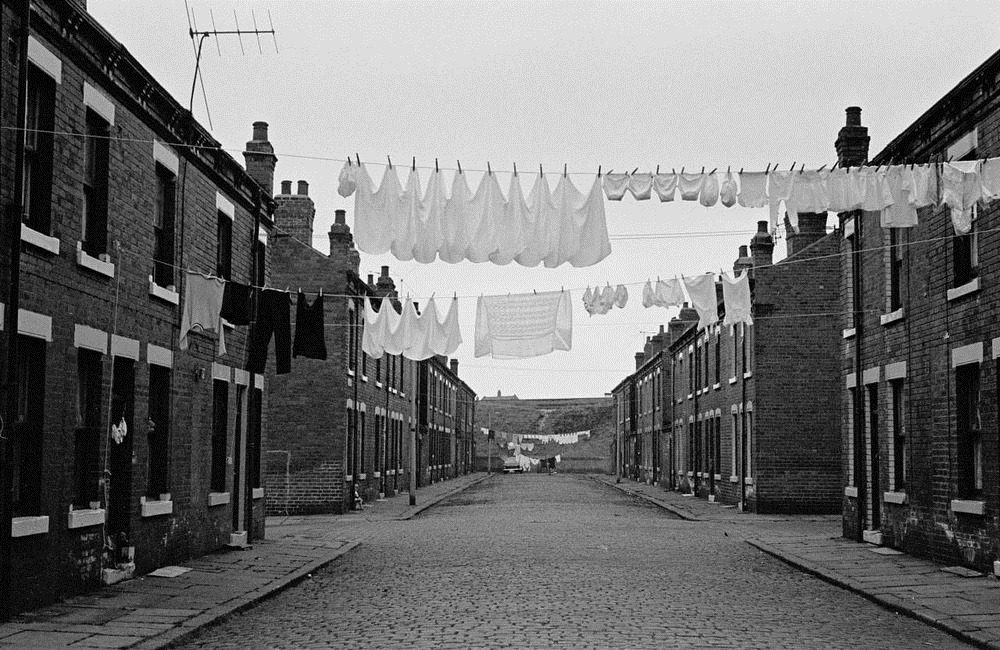
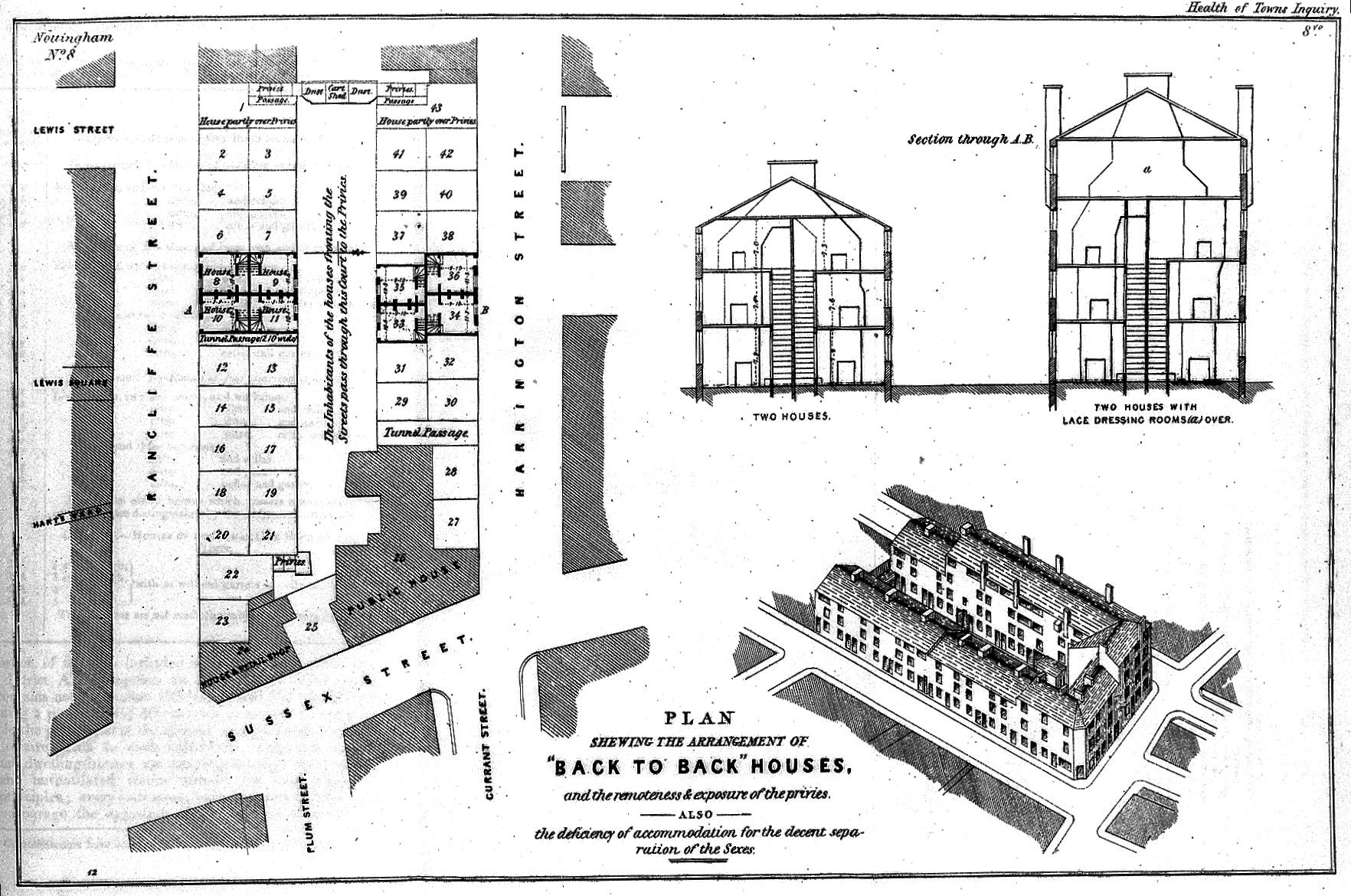
Instead of the private rear garden which limits the efficiency of conventional terraced housing, we propose a multi-level deck, stacked vertically and providing outdoor spaces of increasing separation from the public realm as they rise. The external frame allows these elevated decks to be adapted to provide zones of varied shade, privacy and interconnection. The frame also acts as support for vertical planting, and as a ‘plug and play’ locator for various functions which are more easily maintained and upgraded when separated from the fabric of the building – rainwater harvesting in tanks which double as separating screens between the decks, battery and cycle storage, air source heat pumps and the organisation of recyclables and refuse – together with additional capacity for future unknown technologies to be added. Over time, the frame becomes what the residents need it to be.
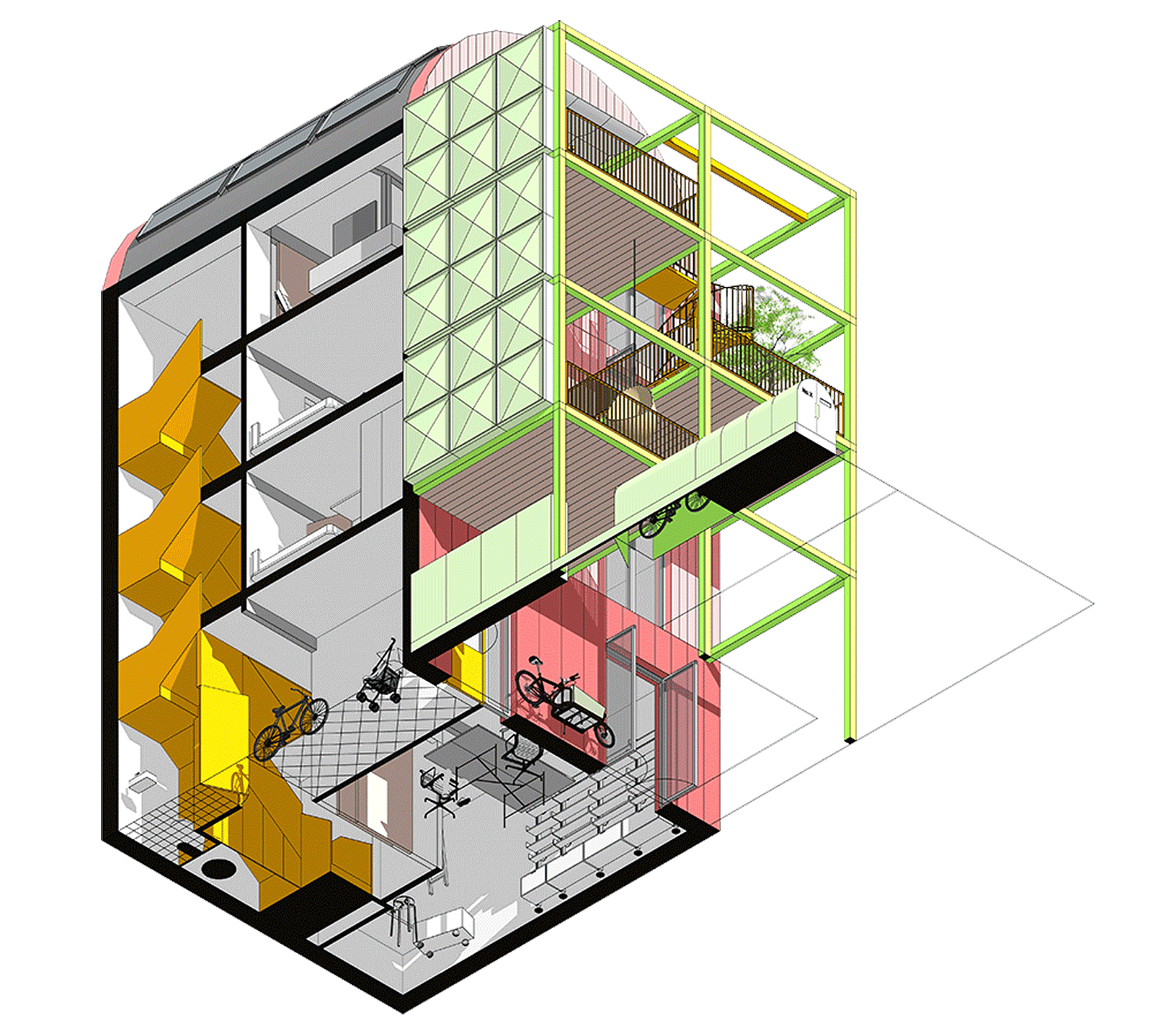
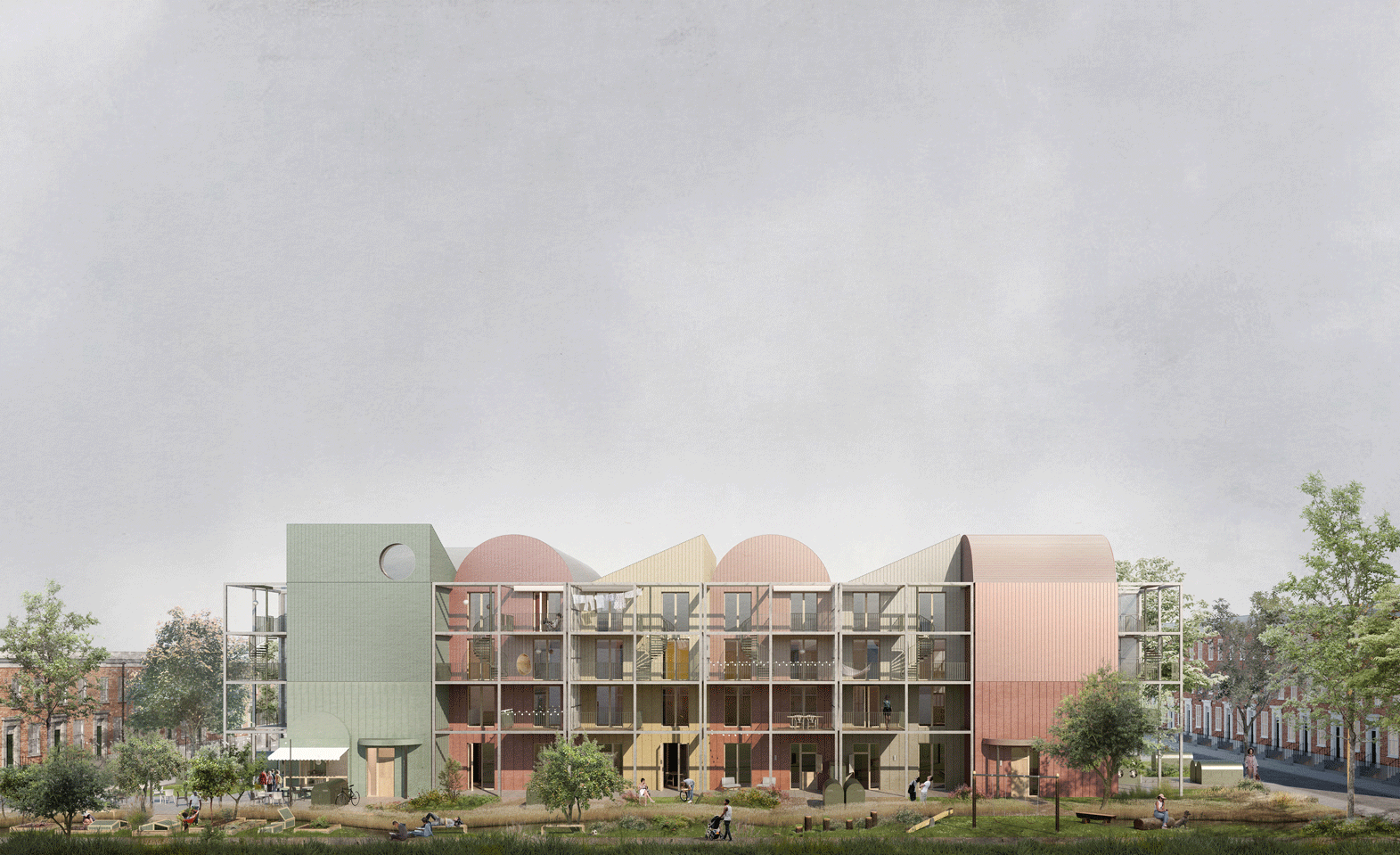
Neighbours address each other, ‘front-to-front’, across a varied landscape of outdoor spaces, both private and communal, offering degrees of privacy and bringing opportunities to meet, share and be productive together. In times of pandemic, the landscape offers multiple possibilities to be physically separated but socially connected.
With the highly efficient grouping of houses and minimal peripheral space given to car storage and vehicle movements, the shared landscape can be generous and varied, wild and productive, resilient to flooding and supportive of sustainable travel.

Houses are assembled quickly, cleanly and with minimal waste, from low carbon components manufactured off-site. Closed panel timber external walls and cassette floors are supported by a single beam at each level which stabilises the external structure, optimises the floor spans and provides long-term flexibility. A choice of roof shapes provides a varied roofscape and distinct spatial character and allows for optimal orientation for solar collection. Structural simplicity at roof level is achieved through the tie beam which allows the roof to be structurally independent.

Flexibility in the plan is achieved by positioning the stair, lift void, risers and serviced zones at the rear of the house and by excluding supporting internal walls. Although our plans show a specific arrangement, including four bedrooms with living on the top floor and workspace at ground level, each storey can be configured to suit and reconfigured over time. This non-determinative approach allows for a variety of flexible and interchangeable spaces for living and working – internal and external, private or public, together or apart.
Rather than being contained in a small separate study, working from home could mean running a client-facing office or workshop from the ground floor, or occupying the loft storey as a more private creative studio space. The rooms of the intermediate storeys can also be dimensioned or configured to accommodate a variety of workspaces whilst still leaving plenty of space for life outside work. When homes are grouped into a neighbourhood, shared workspaces might bring the community together at the street corners, further reducing the need to commute and providing a space from which the community can organise the cultivation of the landscape and the sharing of produce.
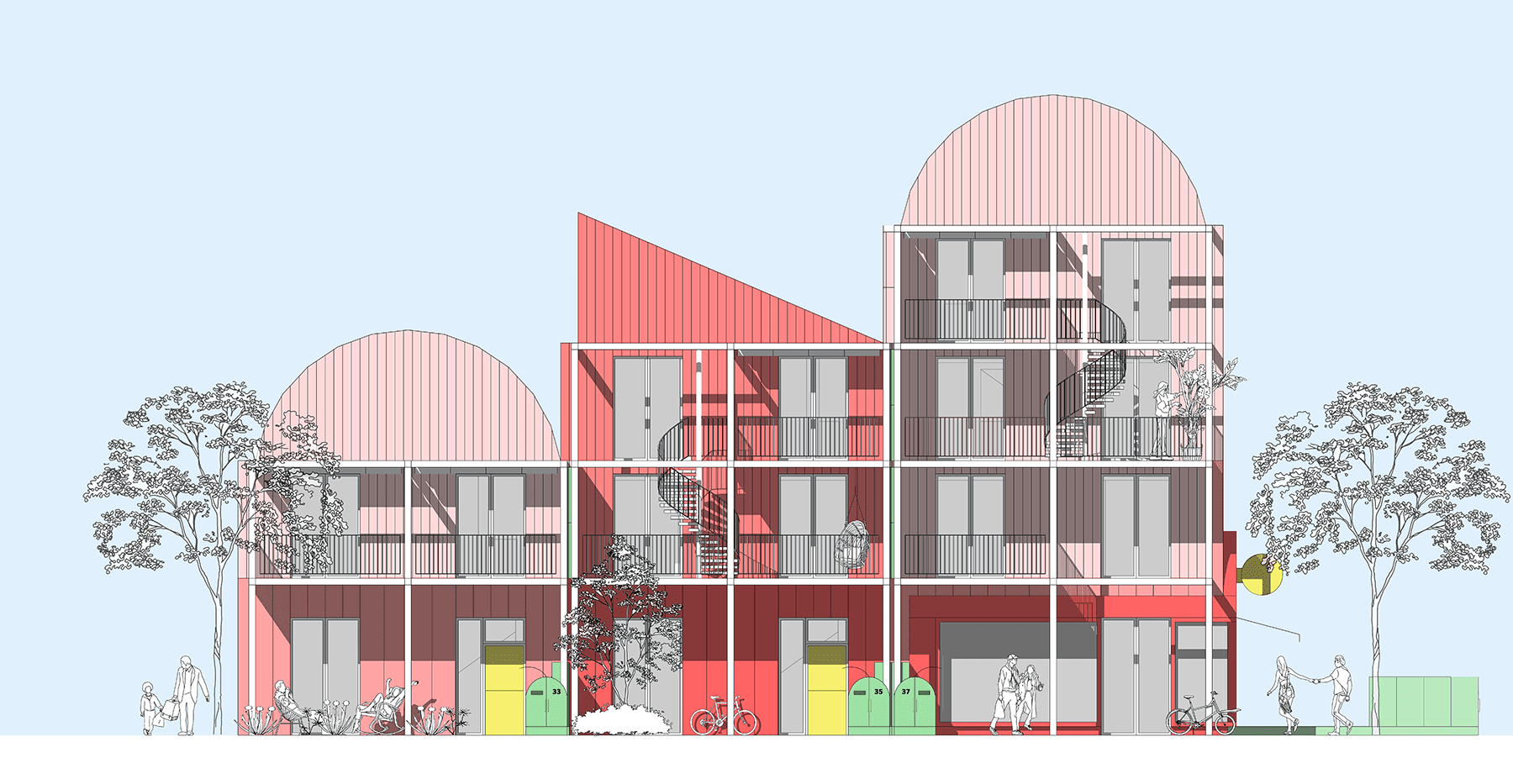
Our entry was awarded Second Prize, with a judges; citation as follows: ‘This design was one of many that explored the notion of back-to-back terraces set with urban blocks. However, it presented the most convincing version of this unusual typology. Judges particularly enjoyed the huge room-sized balconies and the ideas of using offsite construction. It could be a very economical way of building on tight sites with high levels of density mixed with high levels of public amenity. It’s fair to say that its industrial aesthetic split the jury.’